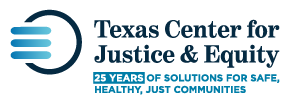Policy Background:
Deaths by preventable overdose continue to rise, with middle-aged Americans and young adults most impacted by the overdose crisis. Many individuals who experience or witness an overdose are hesitant to call 9-1-1, fearing police involvement.
Texas policy-makers should allow people – whether witnesses or victims – to seek emergency medical assistance for a preventable drug overdose without risking arrest, prosecution, conviction, or other penalty.
Key Facts:
- Texas has the 8th lowest drug overdose mortality rate in the United States, with 9.6 per 100,000 people suffering drug overdose fatalities in Texas compared to a mean rate of 13 per 100,000 people nationally.[1]
- However, the number of drug overdose deaths in Texas – a majority from prescription drugs – increased by 78% since 1999, when the rate was 5.4 per 100,000.[2]
- Those at high risk of overdose include the following: (1) individuals with suppressed immune systems, active infections, and certain other chronic illnesses; (2) intravenous opioid users who relapse following detox/abstinence; and (3) people transitioning from opioids orally ingested to intravenous use.[3]
- In 2012, the Texas Department of State Health Services (DSHS) and the Public Policy Research Institute at Texas A&M University conducted its Thirteenth Biennial Texas School Survey of Substance Use, surveying over 47,000 students in grades 4-6 and about 87,000 students in grades 7-12. The survey identified the following:
About 10.8% of secondary school students reported using codeine cough syrup non-medically, and 4% did so in the month prior to being surveyed. Both rates showed a decrease between 2010 and 2012.
About 3.6% of the students reported using oxycodone (OxyContin, Percodan, or Percocet) products non-medically in their life, and 7.5% reported using hydrocodone products (Vicodin, Lortab, Lorcet) non-medically. Both rates were higher than those in 2008 or 2010.
2% reported non-medical use of Valium and 3.9% reported non-medical use of Xanax. Both rates have shown a continuous decrease since 2008.[4]
Relevant Bills:
- Bill Number: HB 225 (authors: Guillen, Johnson, Susan King | sponsor: Watson)
Bill Caption: Relating to the prescription, administration, and possession of certain opioid antagonists for the treatment of a suspected overdose and a defense to prosecution for certain offenses involving controlled substances and other prohibited drugs, substances, or paraphernalia for defendants seeking assistance for a suspected overdose.
TCJE Materials: Fact Sheet
House Hearing Notice: House Criminal Jurisprudence Committee, Notice of Public Hearing on March 11, 2015
Archived House Hearing Video: House Criminal Jurisprudence Committee, 03/11/15 Video [TCJE testimony begins at 02:23:06]
Senate Hearing Notice: Senate Criminal Justice Committee, Notice of Public Hearing on April 28, 2015
TCJE Action: Card in support
Outcome: Vetoed; click here for veto proclamation
- Bill Number: HB 1098 (Johnson, Alvarado)
Bill Caption: Relating to the prescription, administration, and possession of certain opioid antagonists for the treatment of suspected opioid overdoses.
- Bill Number: HB 1099 (Johnson)
Bill Caption: Relating to the prosecution of certain offenses involving the delivery or possession of controlled substances and other prohibited drugs, substances, or paraphernalia.
- Bill Number: HB 2149 (Alvarado)
Bill Caption: Relating to the prescription, administration, and possession of certain opioid antagonists for the treatment of suspected opioid overdoses, training about opioid antagonists and drug overdoses, and grants for related programs.
- Bill Number: HB 2690 (Johnson)
Bill Caption: Relating to the prevention of overdose deaths by providing a defense for prosecution for certain offenses involving the delivery or possession of controlled substances and other prohibited drugs, substances, or paraphernalia for certain persons who seek medical attention for a suspected opioid overdose, and the prescription, administration, and possession of certain opioid antagonists for the treatment of suspected opioid overdoses.
- Bill Number: SB 1462 (author: West | sponsors: Johnson, Alvarado)
Bill Caption: Relating to the prescription, administration, and possession of certain opioid antagonists for the treatment of suspected opioid overdoses.
Senate Hearing Notice: Senate Health & Human Services Committee, Notice of Public Hearing on April 6, 2015
TCJE Senate Action: Card in support
House Hearing Notice: House Public Health Committee, Notice of Public Hearing on May 19, 2015
TCJE House Action: Card in support
Outcome: Effective 9/1/15
- Bill Number: SB 1921 (Watson)
Bill Caption: Relating to the prosecution of certain offenses involving controlled substances and other prohibited drugs, substances, or paraphernalia.
[1] Trust for America’s Health, Prescription Drug Abuse: Strategies to Stop the Epidemic, October 2013; full report here: http://healthyamericans.org/assets/files/TFAH2013RxDrugAbuseRpt16.pdf; Texas-specific “fact sheet” here: http://healthyamericans.org/reports/drugabuse2013/release.php?stateid=TX
[2] Ibid.
[3] Texas Department of State Health Services, Presentation to Senate Health and Human Services Committee: Prescription Drug Abuse in Texas, August 15, 2014, p. 8.
[4] Texas Department of State Health Service, Texas Drug Facts Among Youth, 2012, p. 2; http://www.dshs.state.tx.us/mhsa-decision-support.aspx
